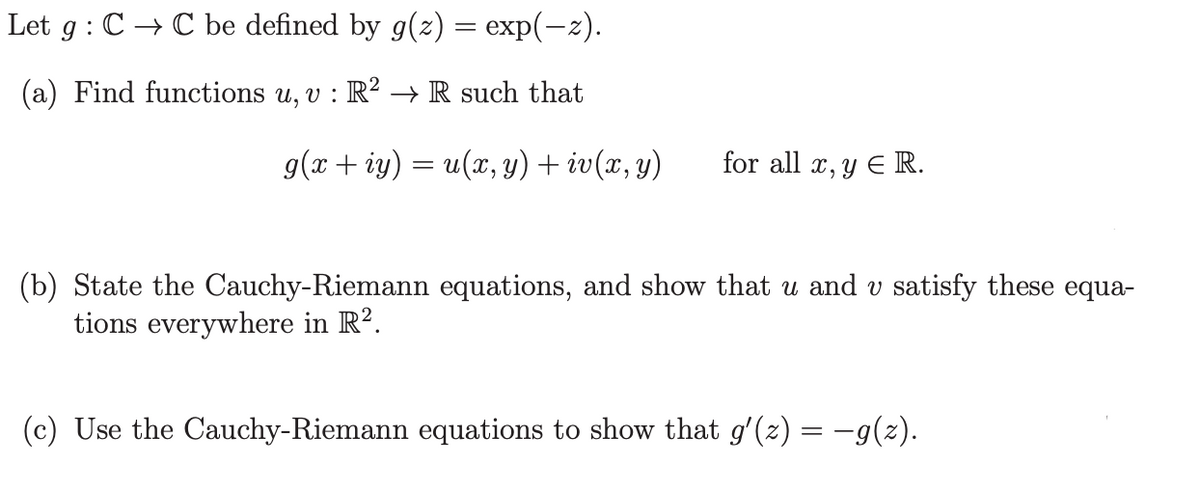(a) Find functions u, v: R² → R such that g(x+iy) = u(x, y) + iv(x, y) for all x, y EE (b) State the Cauchy-Riemann equations, and show that u and us tions everywhere in R2. (c) Use the Cauchy-Riemann equations to show that gʻ(z) = −g(z)
(a) Find functions u, v: R² → R such that g(x+iy) = u(x, y) + iv(x, y) for all x, y EE (b) State the Cauchy-Riemann equations, and show that u and us tions everywhere in R2. (c) Use the Cauchy-Riemann equations to show that gʻ(z) = −g(z)
Linear Algebra: A Modern Introduction
4th Edition
ISBN:9781285463247
Author:David Poole
Publisher:David Poole
Chapter4: Eigenvalues And Eigenvectors
Section4.6: Applications And The Perron-frobenius Theorem
Problem 69EQ: Let x=x(t) be a twice-differentiable function and consider the second order differential equation...
Related questions
Question

Transcribed Image Text:Let g: C→C be defined by g(z) = exp(-z).
(a) Find functions u, v : R² → R such that
g(x+iy) = u(x, y) + iv(x, y)
for all x, y E R.
(b) State the Cauchy-Riemann equations, and show that u and v satisfy these equa-
tions everywhere in R².
(c) Use the Cauchy-Riemann equations to show that g′(z) = −g(z).
Expert Solution
This question has been solved!
Explore an expertly crafted, step-by-step solution for a thorough understanding of key concepts.
Step by step
Solved in 3 steps with 3 images

Recommended textbooks for you

Linear Algebra: A Modern Introduction
Algebra
ISBN:
9781285463247
Author:
David Poole
Publisher:
Cengage Learning

Algebra and Trigonometry (MindTap Course List)
Algebra
ISBN:
9781305071742
Author:
James Stewart, Lothar Redlin, Saleem Watson
Publisher:
Cengage Learning

Linear Algebra: A Modern Introduction
Algebra
ISBN:
9781285463247
Author:
David Poole
Publisher:
Cengage Learning

Algebra and Trigonometry (MindTap Course List)
Algebra
ISBN:
9781305071742
Author:
James Stewart, Lothar Redlin, Saleem Watson
Publisher:
Cengage Learning